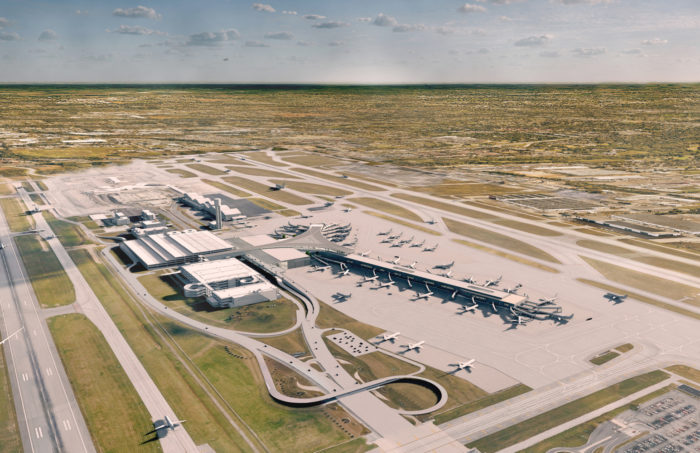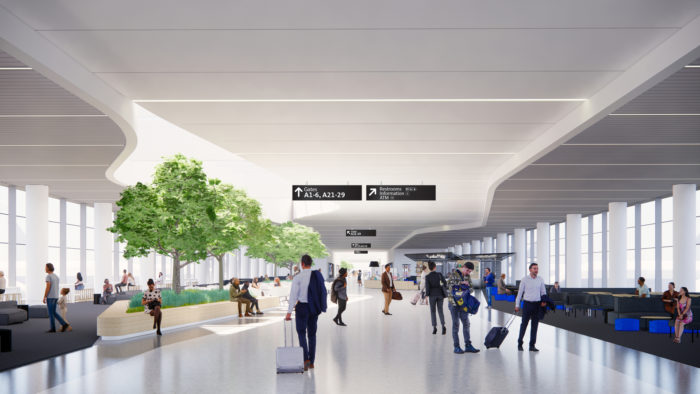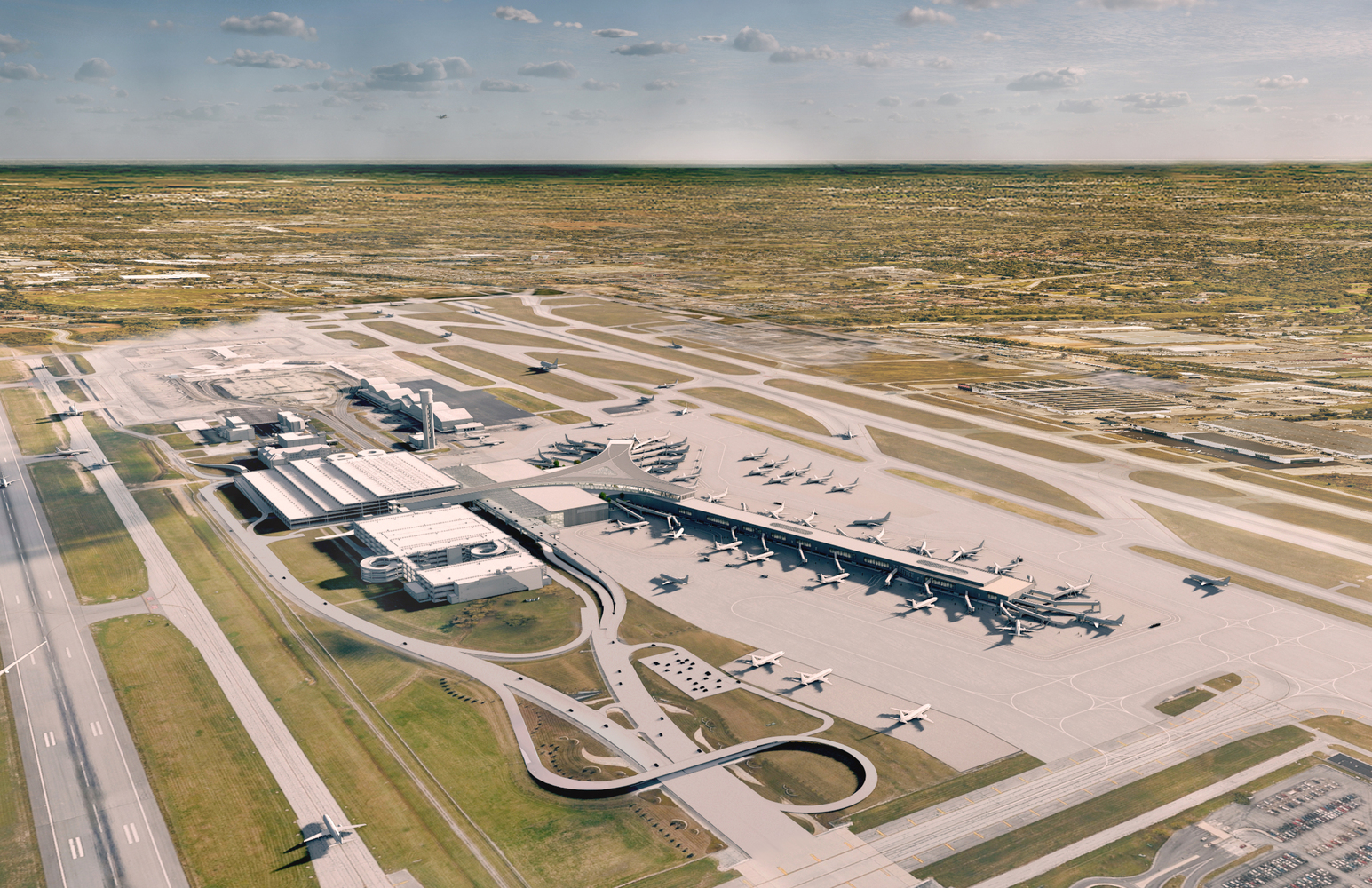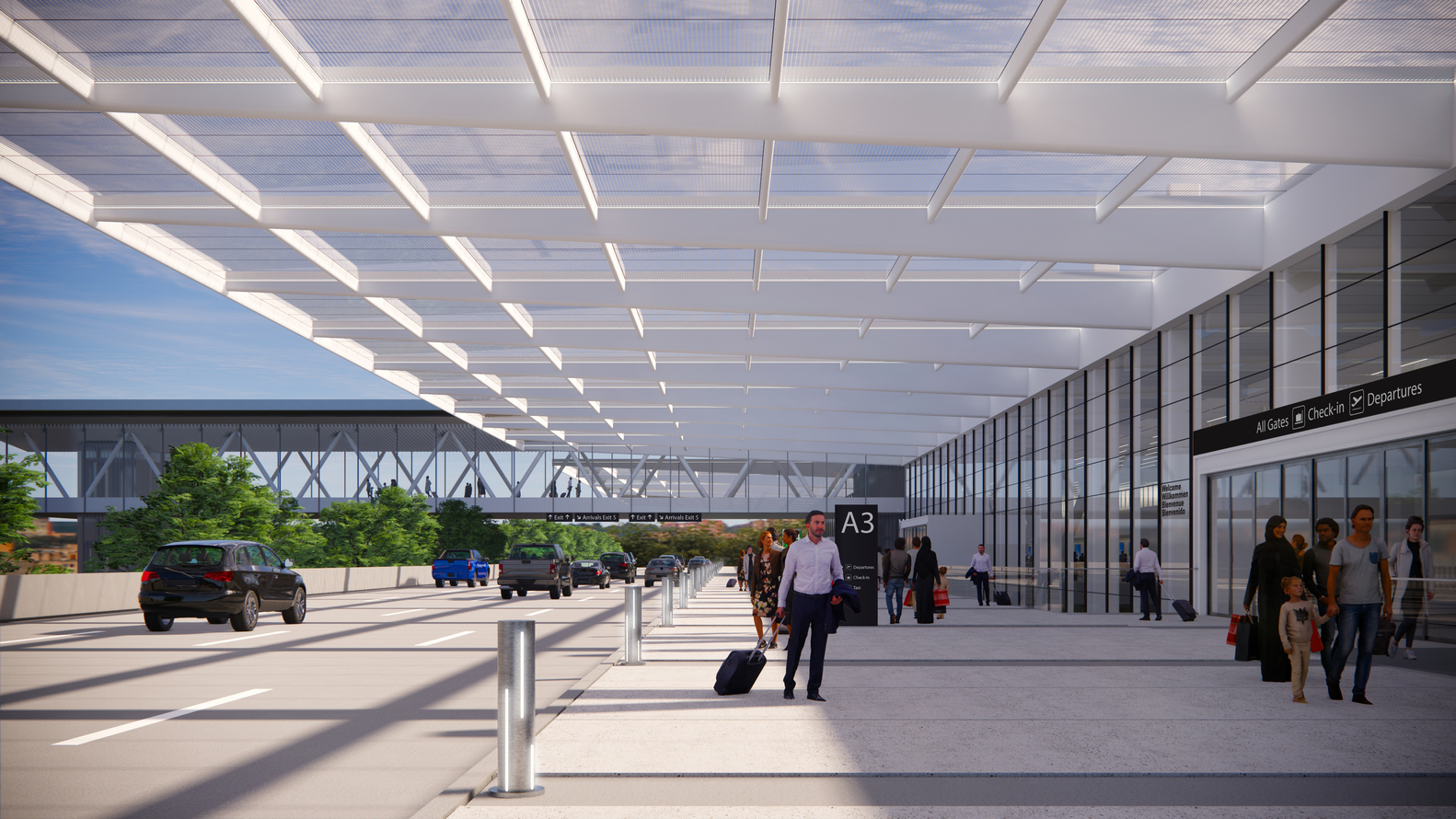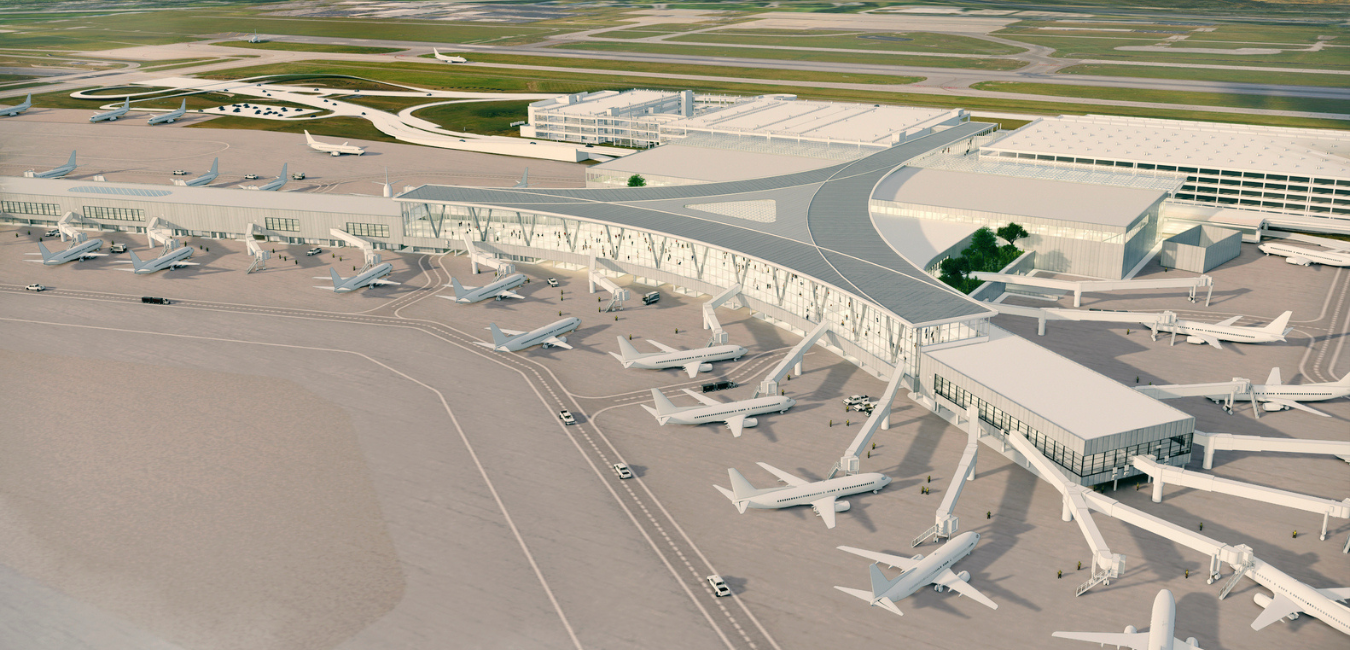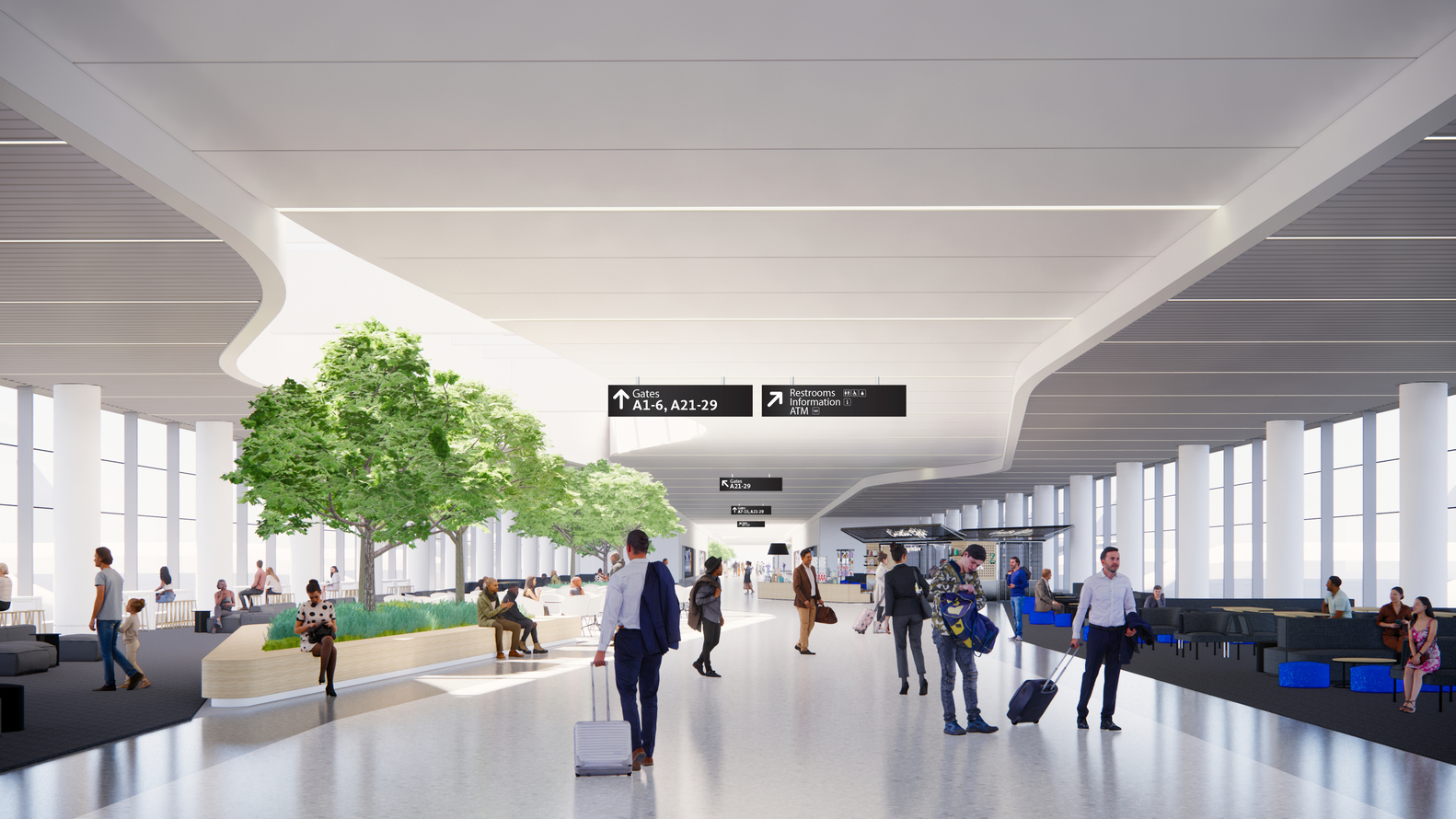Gensler, the renowned architectural firm, has unveiled its ambitious plans to revolutionize the John Glenn Columbus International Airport (CMH) in Columbus, Ohio. The proposal outlines a groundbreaking new terminal design that aims to not only modernize the airport’s facilities but also invigorate the regional economy of Ohio’s capital city by fostering enhanced global connectivity. This transformative project seeks to ensure seamless integration into the evolving urban landscape and the forthcoming demographic shifts in the city.
Columbus International Airport’s New Terminal
Collaborating closely on this venture, Columbus-based architects Moody Nolan have been designated design partners for the upcoming Columbus International Airport terminal. This visionary endeavor is necessitated by the anticipated demographic transformation of Columbus, poised to burgeon into a city of over 3 million inhabitants by 2050, thereby heightening demands on the airport’s capabilities.
Central to the design is the distinct ‘Y’ configuration, symbolizing the merging of the Olentangy and Scioto Rivers, metaphorically representing the diverse pathways traversed by travelers worldwide. Commencing from a ground-level entrance, visitors will be seamlessly guided through ticketing and security checkpoints, culminating in the expansive main concourse. A captivating retail plaza framed by an awe-inspiring central skylight feature awaits travelers at this junction.
To create an equitable waiting experience, the main concourse is encircled by smaller satellite areas, echoing the notion of neighborhoods, allowing passengers to await their departures comfortably. The overarching ambiance seeks to encapsulate the sprawling Midwest horizon, offering a sense of expansiveness and serenity.
One of the primary aims of the Columbus International Airport’s redevelopment is to significantly reduce walking distances, thereby enhancing the overall usability for passengers. Encompassing a staggering 1 million square feet, the terminal will accommodate 36 gates, augmenting waiting areas by 40 to 60%. The estimated cost for this transformational undertaking hovers around $2 billion.
Jonathan Moody, CEO of Moody Nolan, affirms the project’s significance by stating, “The construction of Columbus International Airport’s new terminal signifies not only the city’s sustained growth but also addresses the pressing needs of the metropolitan population.” He further underscores the local team’s excitement for the upcoming terminal, a testament to Central Ohio’s advancement and embrace of progressive architectural paradigms.
Set to commence construction late next year, the project is slated for completion by late 2028 or early 2029. The existing terminal will be meticulously dismantled following the new terminal’s establishment, marking a monumental leap toward Columbus’ evolution as a dynamic and forward-looking urban hub.
Courtesy of Columbus Regional Airport Authority
Courtesy of Columbus Regional Airport Authority
Courtesy of Columbus Regional Airport Authority
Courtesy of Columbus Regional Airport Authority
Courtesy of Columbus Regional Airport Authority



